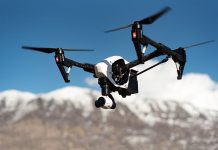
China Military, the official English-language news website for the People’s Liberation Army (PLA), recently shared several fresh images of the Chengdu J-20 “Mighty Dragon” (known as “Fagin” by NATO). Among these, one particular photo caught the eye of many: it featured six of these twin-engine, all-weather stealth fighter planes lined up symmetrically along the runway.
Accompanying the image was a caption explaining that the J-20 stealth fighter planes, belonging to an aviation brigade of the PLA Air Force, were engaged in a military exercise termed an “elephant walk.” This maneuver, occurring on the runway before takeoff during a flight training exercise in early February 2024, garnered significant attention.
Notably, the US Air Force has also shown interest in the “elephant walk” drill, which involves mass taxiing of aircraft before takeoff, often leading to minimum interval takeoffs. While these displays showcase coordination, they are generally interpreted as demonstrations of power and military prowess. It’s plausible that the recent J-20 elephant walk was conducted with similar intentions.
Additionally, another photo released depicted ground crew members conducting nighttime checks on a J-20 fifth-generation stealth fighter plane before a flight training exercise. Further visuals captured the aircraft preparing for takeoff and even in mid-flight.
The roots of the J-20 trace back to the J-XX initiative launched by Beijing in the 1990s, aiming to develop an air-dominant fighter with precision strike capability. This initiative culminated in the Chengdu J-20, the world’s third “fifth-generation” fighter aircraft to be operationally deployed, following those of the United States Air Force, including the Lockheed Martin F-22 Raptor and the Lockheed Martin F-35 Lightning II. The J-20’s journey began with its inaugural flight in 2011.
By 2017, the formidable Chengdu J-20, affectionately dubbed the Mighty Dragon, was officially integrated into the People’s Liberation Army Air Force (PLAAF). Featuring a sophisticated design with a canard-delta configuration, a low-radar cross-section blended fuselage, and substantial canted twin tails, the J-20 has made a significant impact. It also boasts extensive internal weapon bays for long-range and air-to-air missiles, along with two small side bays for short-range air-to-air missiles.
Analyzing the J-20, China’s significant leap in aerospace technology, reveals a complex narrative. Contrary to assumptions, experts suggest that this achievement wasn’t solely the result of indigenous research and development [R&D]. Rather, there are indications that China may have heavily drawn ‘inspiration’ from external sources.
Of particular note is Russia’s reaction, traditionally aligned with China, which appears increasingly discontented. The cause? China’s apparent audacious ‘borrowing’ of technological advancements, particularly irksome as Beijing unveils an array of impressively upgraded military assets.
The striking similarities between the J-20 and the Lockheed Martin F-22 Raptor raise eyebrows. While aircraft often share design cues, Beijing’s approach here seems notably familiar. Reports hint at potential breaches of intellectual property boundaries, with suggestions of direct acquisition of technology and design blueprints.
Amidst these debates, Beijing remains steadfast in its belief in the J-20 as its primary fifth-generation stealth fighter. The urgency to expedite production reflects their strategic intent to counterbalance the induction of U.S. Air Force F-22 Raptors and F-35 Lightning IIs in the Indo-Pacific theater.
The latest imagery serves as a subtle assertion of Beijing’s commitment to this endeavor, reinforcing its strategic significance.
About the J-20
Developed by China’s Chengdu Aerospace Corporation for the People’s Liberation Army Air Force [PLAAF], the Chengdu J-20 stands as China’s premier stealth fighter, engineered for superior stealth, speed, and agility. It is capable of executing both air superiority and strike missions.
Distinguished by its elongated fuselage, sleek nose section, and frameless canopy, the J-20 boasts dimensions of 20.3-20.5 meters in length, a wingspan of 12.88-13.50 meters, and a height of 4.45 meters. Equipped with all-moving tailfin pairs and ventral stabilizing fins, it achieves a maximum takeoff weight of approximately 37,000 kg.
Powering the J-20 are two after-burning turbofan engines. Initially reliant on the Russian AL-31FN series 3 engines, future iterations are expected to adopt the more advanced WS-15 engines, promising supercruise capabilities and enhanced fuel efficiency.
Analyzing the J-20’s armament reveals a formidable array of capabilities. With an estimated operational range of approximately 1,200 kilometers on internal fuel, augmented by aerial refueling capabilities, its reach is substantial. Operating at altitudes of up to approximately 20,000 meters and achieving speeds of around Mach 2.0 (approximately 2,470 kilometers per hour), the J-20 asserts dominance across various operational theaters.
Its armament encompasses a diverse arsenal of air-to-air missiles, air-to-surface missiles, and precision-guided bombs, ensuring versatility in mission profiles. The aircraft’s design incorporates a spacious belly weapon bay tailored for accommodating long-range air-to-air missiles, complemented by two smaller lateral bays dedicated to short-range air-to-air missiles. Additionally, the inclusion of a 30mm cannon enhances its close-range combat capabilities.
Beyond its weaponry, the J-20 is outfitted with advanced avionics, including a sophisticated glass cockpit, helmet-mounted display, and passive electronically scanned array radar. These systems, coupled with features such as reduced radar cross-section and minimized heat signature, significantly bolster its stealth capabilities, enabling it to operate with heightened effectiveness in contested environments.




